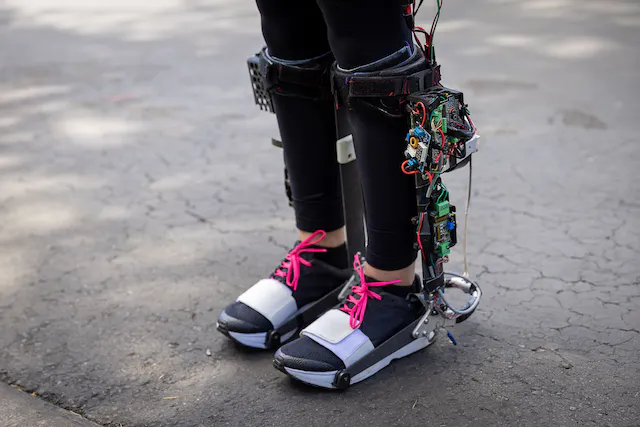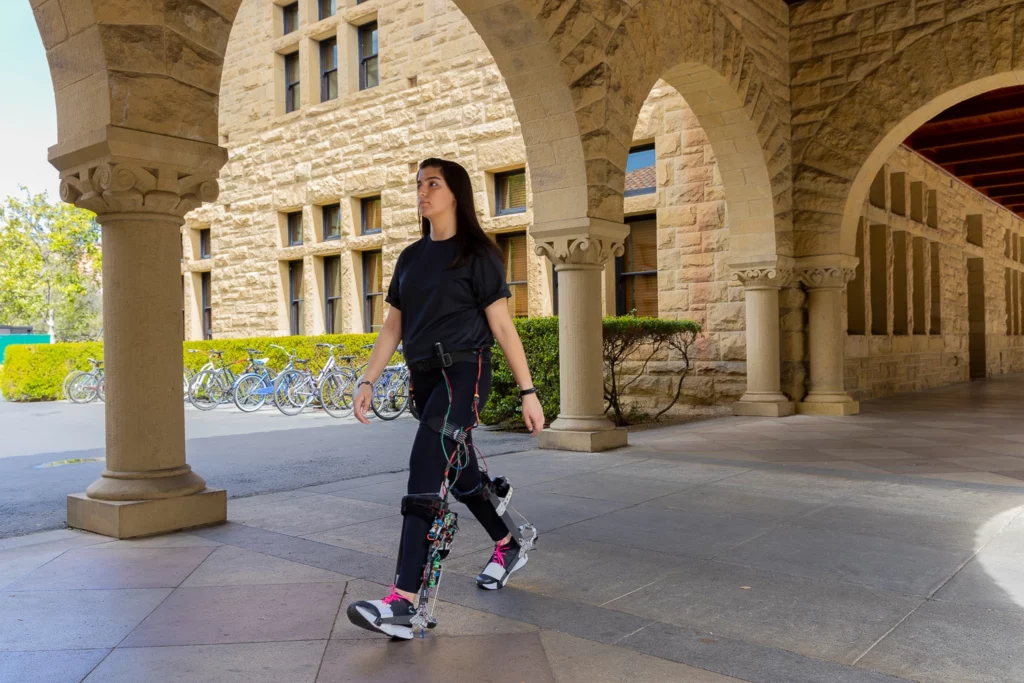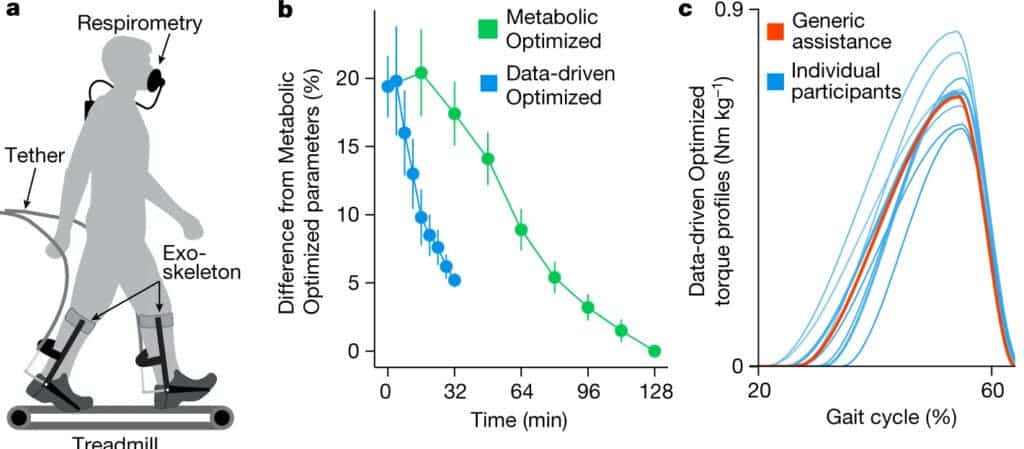An exoskeleton that can help the injured, impaired, and elderly walk better has proven its effectiveness in the real world. Not only does it assist people as they walk, but it also learns in real-time and adapts to different conditions to offer more support.

Everyone walks differently — and the exoskeleton adapts
Exoskeletons for humans have been proving their worth in recent years, but moving away from the lab and into the real world is still a big challenge, which is why this new exoskeleton is so remarkable. Not only does it save energy and support the wearer, but it also uses machine learning to learn on the job and improve the assistance it offers.
“This exoskeleton personalizes assistance as people walk normally through the real world,” said Steve Collins, associate professor of mechanical engineering who leads the Stanford Biomechatronics Laboratory. “And it resulted in exceptional improvements in walking speed and energy economy.”
The exoskeleton is essentially a robotic boot that works on calf muscles to give the wearer a bit of an extra push with every step. It applies torque at the ankle, taking over some of the function of the calf muscle and giving wearers a push just before their toes are about to leave the ground.
The device offers the equivalent of taking off a 30-pound (14-kilogram) backpack. Patrick Slade, who worked on the exoskeleton as a PhD student, says that on a treadmill, the device offers twice the energy savings of previous exoskeletons. While the real world is messier, it still saves the wearer a great deal of energy which translates into walking improvements.

A major problem with exoskeletons is that they need to work for different people with different body shapes and across various situations. So what the Stanford researchers did is used a machine-learning model that they trained for years and years using emulators.
These emulators are large and expensive lab setups that can test how to best assist people. They basically offer blueprints for devices that want to help people move around. Unlike the exoskeleton itself, which has only a few small sensors, these emulators can record a trove of information. The researchers collected data on motion and energy expenditure to understand how different people walk with the exoskeleton and how to best offer support with the exoskeleton.
“We measure force and ankle motion through the wearables to provide accurate assistance,” said Slade. “By doing this, we can carefully control the device as people walk and assist them in a safe, unobtrusive way,” the researcher adds.
What this means is that the exoskeleton applies a slightly different pattern of assistance every time a new person walks. The system also continues to monitor the person as they move around the world and determines how to improve the assistance it provides. It takes about one hour of walking for the machine to develop a consistent pattern of assistance.
“Optimized assistance allowed people to walk 9% faster with 17% less energy expended per distance traveled, compared to walking in normal shoes. These are the largest improvements in the speed and energy of economy walking of any exoskeleton to date,” said Collins. “In direct comparisons on a treadmill, our exoskeleton provides about twice the reduction in effort of previous devices.”
Helping a lot of people

For now, the exoskeleton was only tested on healthy, young adults — so there’s still one more level of testing before we can see exactly what the exoskeleton can do. But being able to get it to work efficiently and being adaptable in the real world is a truly exciting step.
“This is the first time we’ve seen an exoskeleton provide energy savings for real-world users,” said Slade. “I believe that over the next decade we’ll see these ideas of personalizing assistance and effective portable exoskeletons help many people overcome mobility challenges or maintain their ability to live active, independent, and meaningful lives.”
The team is looking to assist people like older adults who struggle walking or people who have an injury or some disability that makes walking harder. However, the exoskeleton could also help people who work in jobs that are physically demanding.
“We’ve been working towards this goal for about 20 years, and I’m honestly a little stunned that we were finally able to do it,” said Collins. “I really think this technology is going to help a lot of people.”
It’s not clear how much such an exoskeleton would cost and whether it would be distributed as a medical product or as a general-use product. However, having exoskeletons ready to go out into the world is truly exciting. About 15% of the world’s population lives with some form of disability, many of which experience difficulties walking and navigating their surroundings. It will be some time before exoskeletons become commonplace, but we may not be very far away from that time.
The study has been published in Nature.


